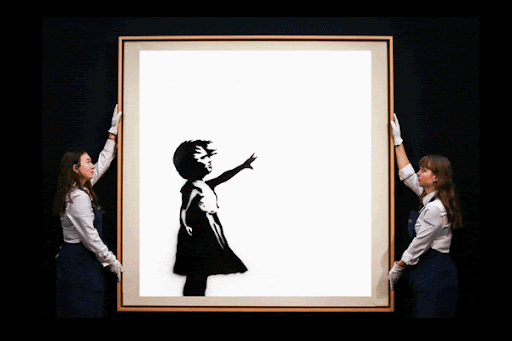- The Wolf on Wealth
- Posts
- Sears Quit. Amazon Took Over.
Sears Quit. Amazon Took Over.
Sears mailed 15 million Wish Books annually and printed money for 60 years. Then they stopped. Amazon picked up the playbook and added Prime.
👋 Sears killed their $3.3 billion catalog in 1993. Amazon launched the exact same catalog in 2018. Same idea, different owner—now worth $1.6 trillion.
Read time: 4 minutes | 1,107 words
STORY - PART 1
The Sears Wish Book: A $3 Billion Empire That Forgot Its Own Playbook
Richard Sears started selling watches by mail in 1886. By 1888, he partnered with Alvah Roebuck to create Sears, Roebuck and Company.
The first catalog had 80 pages. Within a decade, it was 1,200 pages thick.
The genius move:
Sears bypassed expensive retail real estate entirely
Reached 40% of American households through the mail
Rural customers had zero alternatives
By 1895, Sears hit $750,000 in annual revenue (roughly $28 million today).
By 1907, Sears was doing $50 million annually ($1.6 billion in today's dollars). The catalog was the internet of its era.
The Wish Book Phenomenon (1933-1993)
The Christmas catalog launched during the Great Depression. Brilliant timing—families had little money but needed hope and dreams.
The Wish Book became multigenerational marketing gold:
Mailed to 15+ million homes annually at its peak
Average household kept it for 3-4 months
Each catalog generated $300-500 in orders per household
Do the math: 15 million catalogs × $400 average = $6 billion in holiday revenue at peak years.
The catalog itself cost $3-5 to print and mail. Return on investment: 8,000% to 13,000%.
What Made It Print Money
Sears sold everything. Literally everything:
Complete houses (mail-order kit homes: $650-$2,500)
Cars and motorcycles
70,000+ products in a single catalog
Toys, guns, appliances, clothes, furniture, tombstones
The Wish Book section alone featured 200-300 pages of toys.
Psychology that drove sales:
Kids became unpaid sales agents to their parents
Circling items = commitment and desire trigger
Parents couldn't disappoint without guilt
Kept Sears top-of-mind for 12+ weeks before Christmas
The Golden Era Numbers
Peak Sears dominance (1960s-1980s):
350,000+ employees
$50+ billion annual revenue (1980s, ~$186 billion today)
One of every three Americans shopped there
Sears credit cards in 60% of U.S. households
The Sears catalog operation was a $3-4 billion business unit alone.
Profit margins on catalog sales: 12-18% (excellent for retail).
Sears Tower in Chicago was built in 1973 as the world's tallest building. That's how much money they were printing.
The Catastrophic Decline
CEO Arthur Martinez killed the catalog in 1993. His reasoning: it was "only" generating $3.3 billion annually and margins had dropped to 8%.
Terrible decision. Here's why:
Lost direct relationship with 15 million households
Surrendered customer data worth billions today
Abandoned proven distribution model just as internet retail emerged
Saved $300 million in printing costs, lost lifelong customer loyalty
What else crushed the Wish Book? Walmart crushed Sears on price in the 1970s-90s, cutting costs 20-30% while Sears declined from dominance to $36 billion in sales. Sears owned the perfect infrastructure to dominate e-commerce but instead doubled down on dying malls while Amazon built warehouses. Amazon launched in 1995—the same year Sears killed their catalog—and took everything Sears abandoned. Sears filed for bankruptcy in 2018 with $11 billion in debt.
TOGETHER WITH UPWORK
Admitting you can’t do it all is step one.
Running a business shouldn’t mean running yourself into the ground. Upwork Business Plus helps you hire faster by connecting you with elite freelancers across marketing, design, and development—plus Uma Recruiter, your AI hiring partner who finds the right talent before your next meltdown. Hire fast, stay flexible, and only pay for work you approve.
Spend $1,000, get $500 back in Upwork credit. Offer ends 12/31/25.
STORY - PART 2
Amazon's Wish Book Takeover

Amazon mailed its first toy catalog in 2018. The same year Sears filed for bankruptcy.
Jeff Bezos saw what Arthur Martinez missed: the physical catalog never stopped working. Sears just stopped believing in it.
Amazon now sends 30+ million catalogs annually to Prime households. They spend $0.80-1.50 per catalog and generate $100+ per order. That's a 3,000%+ ROI—identical to Sears' golden era.
Here's the genius part: Amazon combined the Wish Book with technology Sears never built.
Kids still circle toys with crayons. But now QR codes let parents buy with one click. Sears needed 4-6 weeks for delivery. Amazon delivers in 24 hours. Same ritual, zero friction.
The data changed everything. Amazon learns which pages kids stare at longest, what parents actually buy, and which trends emerge six months early. Every catalog turns into predictive intelligence worth millions.

Catalog recipients spend 4x more than non-recipients and renew Prime at 96% rates. The catalog doesn't just sell toys—it sells $35 billion in Prime subscriptions.
Sears killed their $3.3 billion catalog operation to save $300 million in printing costs. Over 25 years, they abandoned $750 billion in revenue. Amazon picked up every dollar.
The brutal irony: Sears Tower was built in 1973 to celebrate catalog dominance. Amazon built 200+ warehouses to replace them with the exact same model.
The Wish Book never died. It just changed owners.
Similar modern business takeovers:
Blockbuster killed late fees. Netflix killed Blockbuster with mail-order DVDs.
Kodak invented digital cameras, refused to sell them. Instagram won.
Tower Records owned music retail. Spotify turned albums into streaming.
Encyclopedia Britannica charged $1,400 per set. Wikipedia made it free.
Yellow Pages was a $14 billion monopoly. Google search destroyed it.
Taxi medallions cost $1 million in NYC. Uber bypassed them entirely.
Hotel chains controlled lodging. Airbnb turned bedrooms into hotel rooms.
Newspapers made billions on classified ads. Craigslist gave them away free.
Borders expanded to 1,200 stores in 2003. Amazon Kindle killed them.
Video arcades dominated teen spending. Mobile gaming replaced them.
TOGETHER WITH ROKU
CTV ads made easy: Black Friday edition
As with any digital ad campaign, the important thing is to reach streaming audiences who will convert. Roku’s self-service Ads Manager stands ready with powerful segmentation and targeting — plus creative upscaling tools that transform existing assets into CTV-ready video ads. Bonus: we’re gifting you $5K in ad credits when you spend your first $5K on Roku Ads Manager. Just sign up and use code GET5K. Terms apply.
INSIGHT + ACTION
3 Lessons from the Wish Book Wars
1. Physical + Digital Beats Digital Alone—Even When "Everyone" Says Print Is Dead. Amazon's catalog recipients spend 4x more and browse 42 minutes vs. 8 minutes online. Sears killed their $3.3 billion catalog because margins dropped to 8%—then watched Amazon resurrect it with 3,000% ROI. Physical creates different buying psychology that digital can't replicate.
Action: If you're 100% digital, test a physical component. Mail something tangible to your best customers. Postcards, catalogs, handwritten notes—anything that sits on their desk for weeks instead of disappearing in their inbox. Track the difference in engagement and lifetime value.
2. Never Kill a Profitable Business Unit Just Because Growth Slowed. Sears abandoned $3.3 billion in annual revenue to save $300 million in costs. Over 25 years, that decision cost them $750 billion. "Only 8% margins" on a massive base still prints cash—and funds innovation elsewhere.
Action: If a product line or service "only" generates steady profit without growth, keep it running and use the cash flow to fund new experiments. Milk the cow while you build the next farm. Sears shut down the profit engine right before technology could supercharge it.
3. Own the Customer Relationship, Not Just the Transaction. Sears had 15 million households receiving catalogs for months—Prime membership before Prime existed. They threw it away. Amazon understood: the catalog doesn't just sell toys, it sells subscription lock-in worth $35 billion annually.
Action: Stop optimizing for one-time sales. Build a reason for customers to stay connected between purchases—memberships, subscriptions, communities, recurring content. The relationship is 10x more valuable than the widget. Sears owned the relationship and deleted it. Don't make their mistake.
TOGETHER WITH MASTERWORKS
But what can you actually DO about the proclaimed ‘AI bubble’? Billionaires know an alternative…
Sure, if you held your stocks since the dotcom bubble, you would’ve been up—eventually. But three years after the dot-com bust the S&P 500 was still far down from its peak. So, how else can you invest when almost every market is tied to stocks?
Lo and behold, billionaires have an alternative way to diversify: allocate to a physical asset class that outpaced the S&P by 15% from 1995 to 2025, with almost no correlation to equities. It’s part of a massive global market, long leveraged by the ultra-wealthy (Bezos, Gates, Rockefellers etc).
Contemporary and post-war art.
Masterworks lets you invest in multimillion-dollar artworks featuring legends like Banksy, Basquiat, and Picasso—without needing millions. Over 70,000 members have together invested more than $1.2 billion across over 500 artworks. So far, 23 sales have delivered net annualized returns like 17.6%, 17.8%, and 21.5%.*
Want access?
Investing involves risk. Past performance not indicative of future returns. Reg A disclosures at masterworks.com/cd
MEMES








